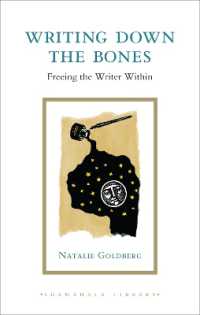- ホーム
- > 洋書
- > 英文書
- > Science / Mathematics
Full Description
Essentials of Statistics for Researchers offers a working introduction to essential statistical methods through an accessible conceptual approach without excessive mathematical details. The book emphasizes the importance of good judgment when choosing analysis approaches and illustrates the statistical analysis process through numerous examples. At its core, this text demonstrates how analysis should serve the science and illuminate the stories contained within data.
Key Features:
Provides conceptual foundations of a practitioner's statistical toolkit, focusing on the
role of Normality, hypothesis tests, and confidence intervals
Presents regression methods as core analytical tools while also covering t-based methods for comparing means among groups
Demonstrates how logarithmic transformations capture relativity in relationships (such as exponential increase) rather than simply meeting statistical assumptions
Includes over 100 graphs and visual representations to enhance understanding of statistical concepts
Written in an engaging first-person voice that positions the authors as fellow learners alongside the reader
Emphasizes stories, examples, and practical applications over abstract theory
Datasets can be downloaded from the supplementary website
This book is designed for researchers across a broad range of disciplines, from graduate students beginning their research journey to experienced professionals seeking a refresher on statistical methods. The accessible approach makes it particularly valuable for those who need to understand and apply statistical concepts without getting lost in mathematical complexity. Readers will gain practical knowledge they can immediately apply to their own research questions and data analysis challenges.
Contents
1. Introduction. 2. Data Concepts. 3. The Statistical Law of Gravity (a.k.a the Central Limit Theorem). 4. Using the data: Introducing Hypothesis Tests and Confidence Intervals. 5. How Confidence Intervals and tests play well together (or not). 6. Introduction to Simple Linear Regression. 7. Regression by the Numbers: Making Sense of and Using the Output. 8. Background Reading and a Few New Ideas. 9. The Use of Logarithms in Regression Models. 10. Introduction to Multiple Regression. 11. Multiple Regression Examples. 12. Two Essays on Multiple Regression. 13. Introduction to Logistic Regression. 14. One and Two Sample Methods for Means and Proportions. 15. Relative Inference for Means From Two Samples: Introducing the Bootstrap. 16. A Brief Introduction to ANOVA. 17. Response Feature Analyses for Repeated Measures Data. 18. Epilogue.






